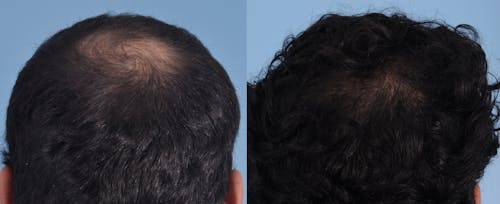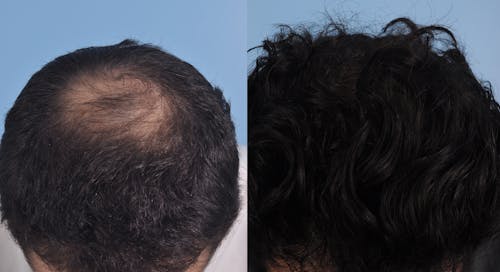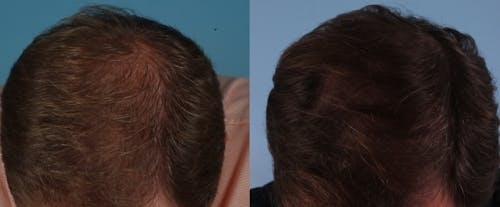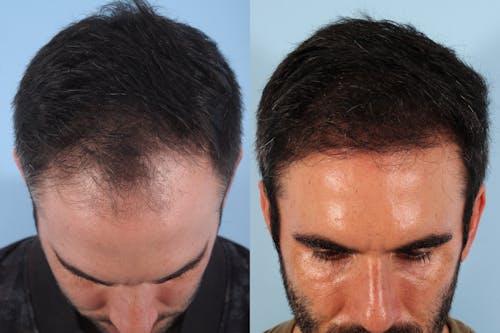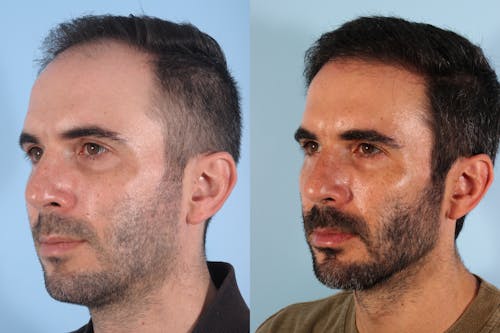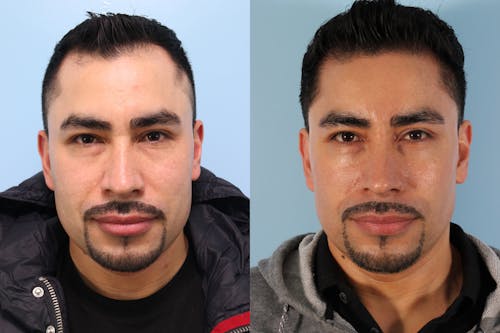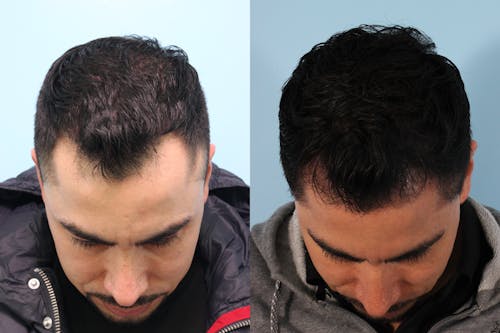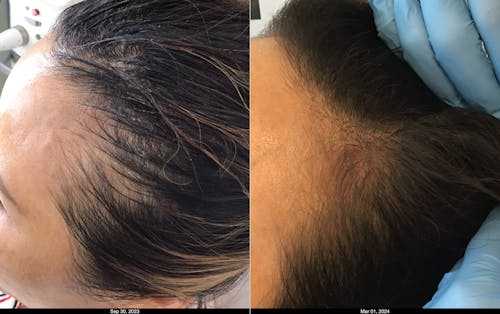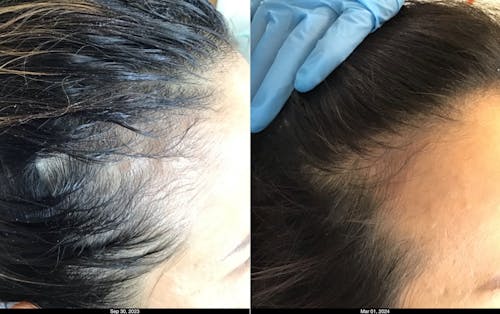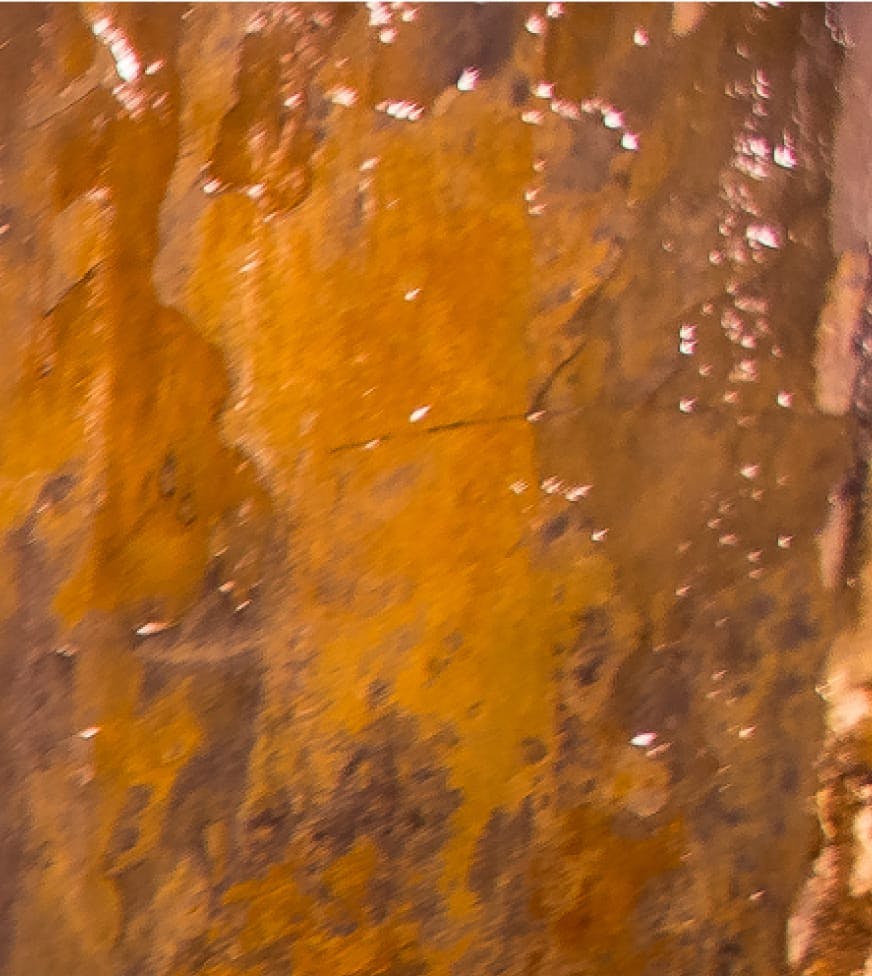Hair transplants for men are surgical procedures used to combat hair loss, typically involving the transplantation of hair follicles from one part of the scalp (usually the back or sides, where hair is denser) to the thinning or balding areas.
Men and Hair Loss
Although very common, hair loss among men can be very distressing. According to the American Hair Loss Association, by age 35, as many as 66% of all men will have experienced hair loss to some degree. By the time men hit their 50s, this number increases to 85%. The majority of hair loss in men (around 95%) is the result of androgenetic alopecia, a progressive condition caused by dihydrotestosterone (DHT). DHT is an androgen derived from testosterone that is known to be responsible for sexual maturation and the development of male characteristics. DHT can bind to receptors in the hair follicles in both men and women, shrinking them and shortening their growth cycles. Over time, affected follicles weaken and die in a process known as miniaturization, eventually resulting in hair loss. It's not known why DHT has this effect on certain individuals, but it appears to be affected by genetic factors. If someone in your family experiences hair loss, you are also likely to. Fortunately, the hereditary nature of hair loss in men means that it is usually not attributed to any serious medical condition. However, the social and psychological impact of hair loss can be significant for those affected, negatively impacting social relationships and overall quality of life.





